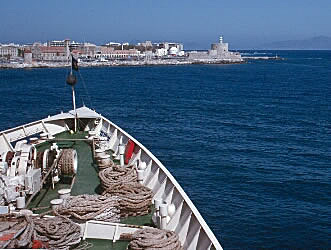 |
|
|||||||||||||||||||
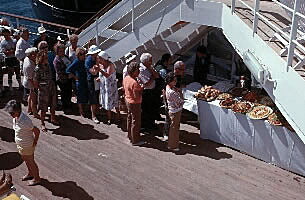 The buffet line |
While on a cruise ship you may be missing some of the amenities you're accustomed to, like spacious living quarters, a large bath and a king-size bed, but there is definitely one thing you're not hurting for and that is food. The food was plentiful and, better than that, it was good. Not only was it plentiful, it was available virtually around the clock. No matter what time of day or night you could always scrounge something up to eat. No wonder cruises have reputations for adding inches to your waist. Having eaten we were ready to disembark and enjoy the sights of Rhodes and Lindos. |
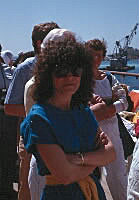 Anne waiting her turn at the buffet |
|||||||||||||||||
| Disembarking the Atlas we boarded a bus for the short ride to the city of Lindos. Lindos lies at the foot of a magnificent Acropolis and is probably one of the most photographed places in all the Greek Islands (right). As you can see its white buildings stand out against the contrasting Acropolis above the city and the surrounding deep blue Mediterranean Sea. Homer's Iliad tells us that Lindos was built somewhere around the 11th century B.C. It is believed that Lindos was the most formidable city on the island at the time. It is also believed that the ships sent to the Trojan War all departed from Lindos. It was here in Lindos that the first maritime laws |
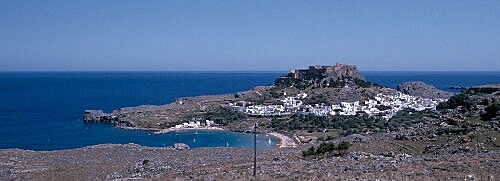 Lindos and the Acropolis |
||||||||||||||||||
|
would be developed, which later became the basis for the Roman 's maritime laws. The people of Lindos were also known for their beautiful sculptures. Sculptures that were made of bronze as the local stone was not suitable material. Chares, the artist who created the famous Colossus of Rhodes, was from Lindos. The Acropolis lies atop a massive triangular rock. Tools found during archaeological digs have dated back to 3000 B.C. I'm not sure exactly to what era the ruins existing today date to, probably between 1000 and 500 B.C., but the massive walls that surround the city today are attributed to the Knights of St. John who controlled trade and shipping until 1522. Enough history, let's look at some pictures of the modern day city of Lindos and the Acropolis that lies directly above her. |
|||||||||||||||||||
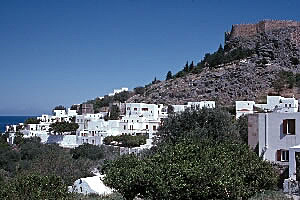 Many of the buildings of modern day Lindos date to the 16th and 17th century and are being restored. Hotels are banned in the city to preserve its historic appearance. Locals offer rooms for tourists to stay and enjoy the sights. |
|||||||||||||||||||
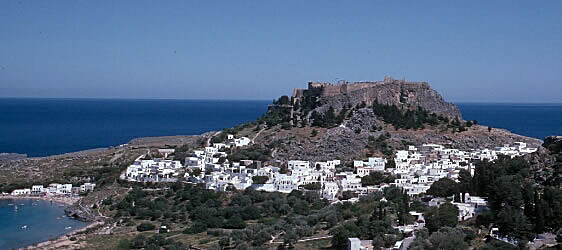 A closer view of the city of Lindos and the Acropolis shows the massive walls built by the Knights of St. John. These walls obstruct the view of the ancient ruins of the Acropolis. |
|||||||||||||||||||
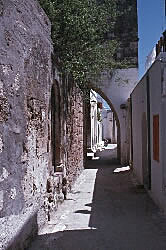 The city is a maze of beautiful streets and small alleys. |
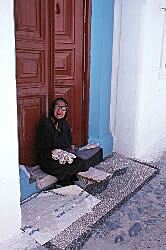 |
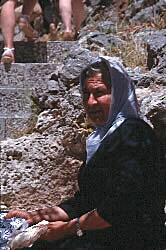 |
 The city of Lindos and its maze of homes. |
||||||||||||||||
|
Many of the city's residents make their living
from the tourists by selling trinkets from their doorways.
|
|||||||||||||||||||
| Continue to the next page to enjoy some of the photographs of the Acropolis, its ruins and the breathtaking views from the top. | |||||||||||||||||||
